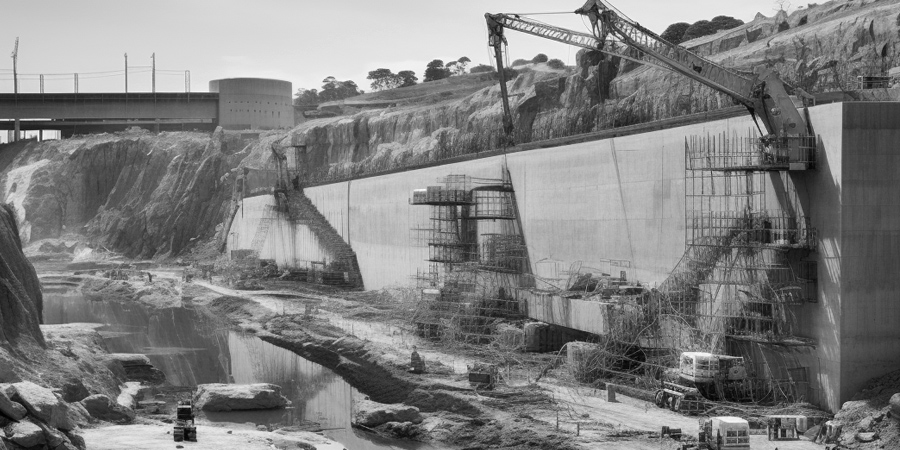With the support of international stakeholders, the African continent is undertaking several large-scale infrastructure projects that cross borders and seek to facilitate intra-African trade and investment.
Strategically designed, these projects carry the potential to stimulate local economic development and job creation, while contributing to energy security and resource sharing. With a collective impact on both regional and global energy markets, these initiatives wield significant influence and are set to shape the African energy sector in 2024 and beyond.
Angola: The Lobito Corridor
The Lobito Corridor is a transregional infrastructure project connecting the southern Democratic Republic of the Congo (DRC) and northwestern Zambia to global trade markets through Angola’s Port of Lobito. In addition to these three countries, the project has been backed by the African Development Bank, Africa Finance Corporation, the US and the European Union with the aim of de-risking, mobilizing financing for and successfully implementing the initiative.
The project serves to alleviate logistical and infrastructural challenges associated with southern Africa’s mining sector. Recent developments include the allocation of $455 million by Lobito Atlantic Railway for the acquisition of 1,555 wagons and 35 locomotives in Angola, along with workforce training as part of the concession. An additional $100 million will be invested in the DRC, and the possibility of future investments in Zambia remains open. The project is noteworthy as it has the potential to streamline exports and boost the respective economies of Angola, the DRC and Zambia, as well as signals growing interest from Western partners in Africa’s mineral reserves.
Nigeria: Dangote Refinery
With the capacity to produce up to 650,000 barrels per day (bpd), the Dangote Refinery is set to be the largest on the African continent. The refinery complex includes a 435 MW power station, a deep seaport and a fertilizer unit. The refinery is on track to commence its operations through a phased approach. Owing to minor delays, phase one is expected to come online in the first quarter of 2024 and to run at full capacity by 2025. The refinery will alleviate chronic fuel shortages in Nigeria, reduce petroleum costs and position the country as a regional refining hub, representing a key milestone in the expansion of Nigeria’s downstream infrastructure.
Uganda: Lake Albert Development
The Lake Albert Development in Uganda includes two upstream oil ventures: the TotalEnergies-operated Tilenga project and the Kingfisher project, operated by China National Offshore Oil Corporation (CNOOC). These projects are slated to commence production in 2025, with a combined production of 230,000 bpd. In addition to producing first oil for Uganda, the development involves the construction of the 1,443-km East African Crude Oil Pipeline (EACOP), which will transport approximately 246,000 bpd from Uganda’s Tilenga and Kingfisher fields to Tanzania’s Port of Tanga, facilitating international exports. Key stakeholders in the EACOP include TotalEnergies, the Uganda National Oil Company, the Tanzania Petroleum Corporation and CNOOC, and completion is expected in 2025.
Equatorial Guinea: Punta Europa Gas Mega Hub
The country’s flagship Gas Mega Hub (GMH) – which seeks to utilize existing infrastructure to build an intra-African gas trade – is expanding significantly. Following the success of the initial phase connecting the Chevron-operated Alen Field to the Punta Europa liquefied natural gas (LNG) terminal, the second phase, commencing in January 2024, will process gas from the Marathon Oil-operated Alba Field. The GMH’s third phase targets the commercialization of gas from the Aseng field, which has been in operation since 2011.
In early 2022, Nigeria inked a Memorandum of Understanding (MoU) with Equatorial Guinea to commercialize untapped gas resources near their shared border through an offshore gas pipeline to the Alba facilities, ensuring access to the Punta Europa LNG terminal. This MoU could expedite the development of Nigeria’s gas fields like Oron 2, as well as explore commercialization opportunities from nearby oil fields. Last March, Equatorial Guinea also signed a bilateral trade agreement with Cameroon, enabling the GMH to tap into trans-border wet gas fields and further solidifying its vision to become a central gas-processing hub in the Gulf of Guinea.
MSGBC: 225 KW Regional Interconnection Line
Commissioned earlier last month, the 1,677km, 225 KW regional electricity interconnection line is part of the Gambia River Basin Development Project, spanning Senegal, The Gambia, Guinea-Bissau, and Guinea-Conakry. Various utilities from the four countries, including the Gambia National Water & Electric Company, Electricity of Guinea, Electricity and Water of Guinea-Bissau and Senelec, have collaborated to facilitate a regional energy exchange. The full completion of the project, which also includes the construction of 15 electronic transformation stations, will see Guinea-Conakry and Guinea-Bissau joining their MSGBC counterparts in energy sharing via the network, enhancing energy resilience across 14 countries in West Africa.
